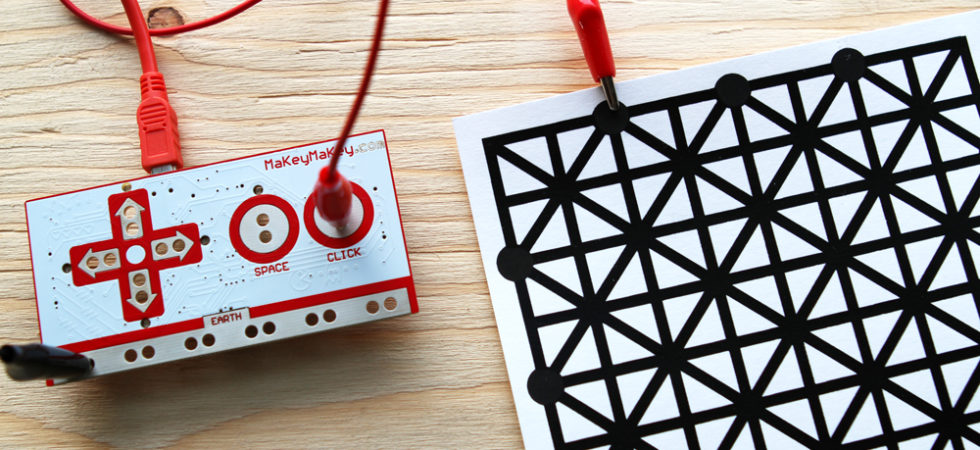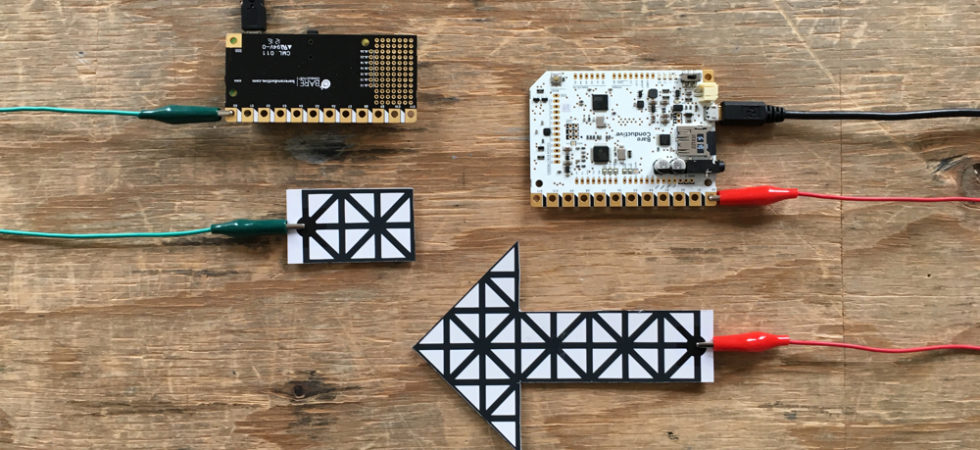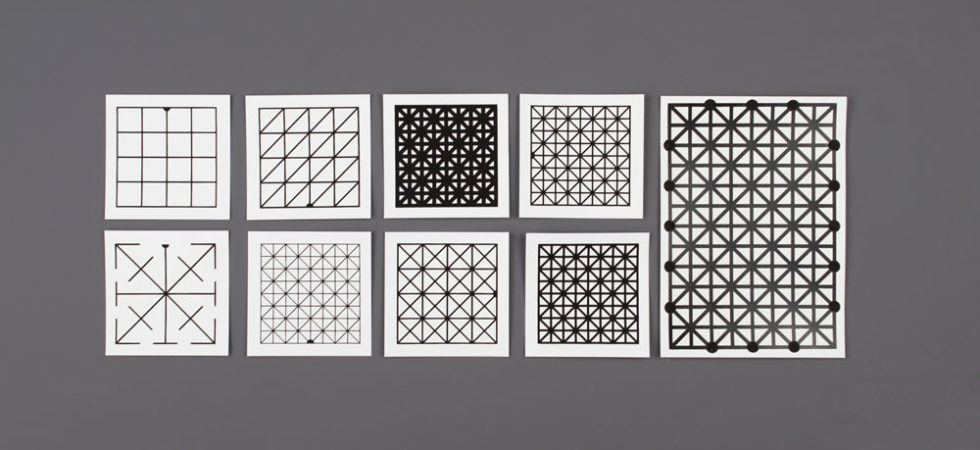When you look at the Printed Sensors, the first thing you might notice is the gridded pattern of Electric Paint. More than just a good looking pattern, the Printed Sensors show how precisely you can work with our paint. Even if you only print fine lines with Electric Paint, you can still get a high performing result. The Printed Sensors are a great example of this.
When we design our products, we always have one thing at the forefront of our minds; you, our community! The inspiration behind the Electric Paint Printed Sensors were some your projects, for example, the data flags and the polyphonic playground. These projects showed us how a part of our community screen print with Electric Paint and incorporate these prints into their work. We wanted to give everyone the ease to work with these clever print designs, using Electric Paint. This is why we created our Printed Sensors.
Originally only available as part of the Touch Board Pro Kit, the Printed Sensors give you easier access to Electric Paint. We’ve already printed and sealed the paint paths for you. Great for pros or beginners alike, the sensors allow you to use the Electric Paint in a context outside of the paint itself. Instead of first designing your sensors with Electric Paint, you can cut, customise and directly play with our Printed Sensors.

We have been making sensors with Electric Paint for quite a while now. With that, comes testing, learning and a wealth of knowledge and recommendations, which we have summarised for you in this tutorial here, if you would like to make your own. One of the key insights we’ve discovered is that a gridded rectangle is more effective as a sensor, compared to a completely filled rectangle. We have tested a lot of designs and discovered that a pattern of 15-50% solid fill, when spread evenly, demonstrates the best and most reliable performance. This is why we chose this pattern for our Printed Sensors.
The Printed Sensors are also coated to seal in the Electric Paint. By coating the Printed Sensors, we make it possible to bend the sensors and to prevent smudging. Only the outer nodes have been left exposed, which allow you to connect to the sensor. The 16 access nodes on the sensors give you the freedom to cut and customise shapes for your projects and prototypes.
We want to allow more people to use and experiment with screen-printed sensors, that’s why we’ve made them a standalone product in our range. And if you’re curious, yes, they can be used with Touch Boards, Raspberry Pi, Arduino and Makey Makey boards.











